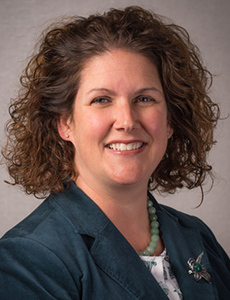Sponsored Content by The Hartford
3 Trends Are Increasing Schools’ Exposure to Liability Claims. Here’s What Educators Need to Know and How to Reduce the Risk

Schools have a duty to keep students healthy and safe but face several challenges in fulfilling this obligation.
With extracurricular activities spread out across empty classrooms, gymnasiums and athletic fields, it’s impossible to monitor every student and staff member all the time. Administrators, teachers, coaches, building staff, volunteers and other students can all provide a set of watchful eyes — but are also potential perpetrators of abuse. Even the strictest background checks will inevitably fail to catch every bad actor, and they do not address risks posed by other students.
The risk of injury inherent to sports is also difficult to eliminate. Wherever there’s physical activity, there is a chance for someone to get hurt.
Two specific safety risks that schools perennially grapple with are traumatic brain injury (TBI) and abuse. Though schools have, on the whole, gotten better at mitigating these risks, recent legislative and societal changes have created opportunities for frequency and severity of both types of claims to spike.
Here’s how three developing trends are increasing schools’ exposure to liability claims and how the right insurance partner can help schools better protect their students and staff.
1. Advancing TBI Science Highlights the Role of School Sports

Heather Savino, Underwriting Officer and Industry Lead, Private Education, The Hartford
The risk of traumatic brain injury has always existed in school sports but was not always well understood. Today, scientific advancements have created a clearer picture of how and when TBIs develop, shining a light on the role of youth sports.
“We know that a series of concussions or even repetitive sub-concussive impacts can result in chronic traumatic encephalopathy (CTE). By studying the degradation of brain cells, scientists have been able to identify markers of this disease much earlier in living patients. We know now that the risk of permanent damage is greatest to athletes under age 12,” said Heather Savino, underwriting officer and industry lead, Private Education, The Hartford.
This discovery has spurred improvements in youth sports safety protocols. Many soccer leagues, for example, have banned the teaching, practicing, or intentional game play of head balls for players under 11. But these advancements may also bring some blame back to schools.
“As we continue to make strides in understanding the science of TBIs, we can also take steps to reduce their frequency and severity. At the same time, the ability to diagnose TBIs earlier does potentially increase the universe of possible claimants,” Savino said.
“This introduces the opportunity for people to learn later in life that they suffered a traumatic brain injury at the hands of a sports program they participated in years or even decades ago. It’s possible that the more scientists learn about TBIs, the more liability schools will bear for them.”
Landmark legal cases have also brought more awareness to the issue, which could contribute to retroactive claims. Most notable is the class action lawsuit brought against the NCAA in 2011 by former collegiate football players who claimed the organization knew but did not warn student athletes of the long-term risks of head injuries. The case ultimately settled for $75 million.[1]
2. Social Media Expands the Arena of Student-on-Student Abuse
 Like the risk of TBI in sports, the risk of abuse is not new in school settings. Today, however, it is made more complicated by technology.
Like the risk of TBI in sports, the risk of abuse is not new in school settings. Today, however, it is made more complicated by technology.
“What has materially changed is the influence of social media. Abuse can be physical, sexual, verbal or psychological. The emergence of social media and the way it dominates student life today in every level from elementary school all the way into college has made mitigating abuse more challenging for schools,” Savino said. “It is definitely introducing a complexity and a heightened risk factor.”
Though findings vary, surveys indicate that at least one-third and up to one-half of students experience cyberbullying before age 18. Online harassment can sometimes precipitate physical assault.
Savino said schools may overlook or misunderstand their liability when it comes to such student-on-student abuse. “The liability is the same because the school has a responsibility and duty of care in protecting their student and staff when they’re in their care, custody and control,” she said. “That standard of care applies no matter who the perpetrator is on their campus.
To take care in protecting their students, schools should have a written abuse and molestation prevention policy that is widely understood and adhered to, including but not limited to state and federal background checks (where permitted by law) for staff and volunteers.
Legislative changes are also heightening risk for schools. In 2019, 24 states adopted “reviver statutes” – laws that lift or extend the statute of limitations on claims of abuse, allowing adults to seek retroactive accountability for childhood incidents. This will likely open the door for hundreds of new claims.
The Associated Press estimates that as many as 5,000 new cases could be filed in New York, New Jersey, and California alone under these laws, resulting in payouts exceeding $4 billion. Schools and religious institutions are likely to bear the brunt.
“With both traumatic brain injury and abuse, there are intangible ramifications on the school’s reputation for having a systemic failure in either of these areas.” — Heather Savino, Underwriting Officer and Industry Lead, Private Education, The Hartford
3. Social Inflations Drives Up the Financial Severity of Claims
Legislation and legal precedents are just part of the equation increasing schools’ exposure to TBI and abuse claims. These standards create opportunities for claims to be brought, but social inflation is the catalyst driving up the financial impact of those claims.
“It’s a combination of three things: increasing sentiment that favors individual plaintiffs over organizations, the way plaintiff’s attorneys capitalize on that sentiment and play to jurors’ emotions, and the desensitization to large monetary figures. Together, this is leading to higher settlement or verdict values that we would not have seen previously,” Savino said.
Take for example the $4.5 million settlement awarded to a former high school student who suffered a traumatic brain injury in 2011 during a cross-country practice. He was hit by a car while crossing a dark road during an early morning workout. The injury left him permanently disabled.
In another case, a $15.7 million settlement was awarded to eight students in a California school district who claimed a special education teacher at their school molested them between 2015 and 2016.
In 2019, a grade school softball player was awarded $1.1 million after she was hit in the head by a bat during a practice when the students were not wearing helmets. The lawsuit argued that her New York school district failed to provide training for coaches and to implement policies for coach-to-student ratios that would have ensured proper supervision.[2]
An Insurer with Demonstrated Education Expertise Is Key
For schools, minimizing exposure to these claims requires going above and beyond the duty of care established by law. Policies and procedures must be supported by an underlying culture that prioritizes safety. Failing to put safety first will not only result in financial consequences, but reputational damage as well.
“With both traumatic brain injury and abuse, there are intangible ramifications on the school’s reputation for having a systemic failure in either of these areas,” Savino said. “Especially with social media, there’s nowhere for schools to hide. That’s why when we partner with a school, we help them to assess the strength of their program and ensure they know how to reduce the risk of incidents occurring and respond appropriately when they do.”
Experts with years of experience in the education sector help schools assess, for example, their hiring and investigation procedures. How do they select the staff for their school? Are they conducting thorough background checks and requiring the appropriate clearances? Are coaches trained on concussion prevention and management? Perhaps more importantly, can they be trusted to stick to this training even if it means compromising a team’s success? How do they investigate reported incidents?
“We work with them through our underwriting, claims and risk engineering teams to make sure that they’ve got everything they need to be successful. And then if a claim does happen, we have a dedicated team of experts with litigation experience who only handle high complexity claims such as brain injury, abuse and molestation, et cetera,” Savino said.
The Hartford has been underwriting risks in private education for more than 200 years, offering multiple lines including property, general liability, commercial auto, workers’ compensation, environmental, multinational, marine and professional liability.
“That is one way we illustrate our commitment and our specialization to schools. I think it speaks volumes that we can weather issues as significant as TBI and abuse and molestation, and still be here 200 years later providing the same reliable coverages and services our clients depend on,” Savino said.
To learn more about The Hartford’s coverages for the education sector, visit https://www.thehartford.com/schools.
[1] Mack v. National Collegiate Athletic Association, Case No. 1:19-cv-00249, in the U.S. District Court for the Southern District of Indiana, https://www.classaction.org/media/mack-v-national-collegiate-athletic-association.pdf.
[2] John Ferro, “Jury awards $1.1M to Spackenkill softball player injured during practice,” Poughkeepsie Journal, June 13, 2017, https://www.poughkeepsiejournal.com/story/news/local/central-dutchess/2017/06/13/spackenkill-softball-injury-lawsuit/394076001/.
The Hartford® is The Hartford Financial Services Group, Inc. and its property and casualty subsidiaries, including issuing company, Hartford Fire Insurance Company. Its headquarters is in Hartford, CT.
![]()
This article was produced by the R&I Brand Studio, a unit of the advertising department of Risk & Insurance, in collaboration with The Hartford. The editorial staff of Risk & Insurance had no role in its preparation.










